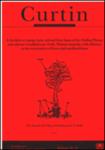A checklist of canopy, bark, soil and litter fauna of the Darling Plateau and adjacent woodland near Perth, Western Australia, with reference to the conservation of forest and woodland fauna
| dc.contributor.author | Heterick, Brian E. | |
| dc.contributor.author | Majer, Jonathan | |
| dc.contributor.author | Recher, H. | |
| dc.contributor.author | Postle, A. | |
| dc.date.accessioned | 2017-01-30T14:00:08Z | |
| dc.date.available | 2017-01-30T14:00:08Z | |
| dc.date.created | 2008-11-12T23:21:15Z | |
| dc.date.issued | 2001 | |
| dc.identifier.citation | Heterick, B.E. and Majer, J.D. and Recher, H.F. and Postle, A.C.. 2001. A checklist of canopy, bark, soil and litter fauna of the Darling Plateau and adjacent woodland near Perth, Western Australia, with reference to the conservation of forest and woodland fauna. : Curtin University of Technology. | |
| dc.identifier.uri | http://hdl.handle.net/20.500.11937/37174 | |
| dc.description.abstract |
This paper tables and reports on pooled taxonomic data from three separate research projects involving aspects of eucalypt invertebrate ecology: canopy invertebrates in jarrah and marri forest; bark invertebrates on four eucalypt species in forest and woodland; and soil and litter fauna in jarrah and marri forest. The data support the notion of a high invertebrate biodiversity on and under southwestern eucalypts, with 1234 adult morphospecies of invertebrates being collected fiom the bark alone. Despite different trapping methods used in each of the three studies, we were able to find a high degree of overlap at the family level between bark and canopy fauna. (126 families were found on both bark and in the canopy representing 79.2% of 159 canopy families). Eighty identified genera were also found on both bark and canopy, which represents 46.2% of the 173 identified canopy genera. The soil and litter fauna data are not complete (a taxonomic inventory of Acarina and Forrnicidae is not available) but appear to be more distinctive, sharing only 24 families (=60% of the 40 identified soil-litter families) with bark, and 17 families (=42.5% of the soil-litter families) with the canopy. At the generic level, only seven identified genera (=8.6% of 22 soil-litter genera) were shared between soil-litter and bark, and five genera (=6.2% of soil-litter genera) were shared between soil-litter and the canopy.An examination of the trophic guilds reveals that fungivores-decomposers were very diverse in soil and litter, accounting for approximately 50% of the biodiversity in these substrates. This guild was much less diverse on the canopy (21.6% of the canopy diversity) and the bark (16.9% of bark diversity). Sap-sucking organisms were more diverse in soil (13.9%) and litter (12.8%) than on the canopy (5.3%) or on bark (5.9%). The canopy result is surprising and suggests that not many invertebrate species are able to feed on the sap of southwestern eucalypts, whose sap may contain a high proportion of toxic compounds. Predators were more diverse on the canopy and on bark (19-23% of total taxa) than in soil and litter (9-9.5%), as were parasitoids (18.7% and 22.5% compared with 10.5% and 14.8%). Epiphyte grazers and phytophageh were not very common (plus or minus 11%) on any of the substrates, while representatives of other guilds or organisms whose diet was unknown accounted for less than 2.5% of the total diversity. Tourist species were not recognised among the soil and litter fauna, though they were found in the canopy and on bark and ants were not quantified for soil and litter.A typical southwestern Australian eucalypt is thus an important host for very many invertebrates which occupy a wide range of trophic guilds. Should the system be altered, the result could be a catastrophic simplification of the invertebrate fauna presently found in eucalypt communities. Ultimately, many vertebrates and plants dependent on that invertebrate fauna for food, pollination and other processes would also disappear. | |
| dc.title | A checklist of canopy, bark, soil and litter fauna of the Darling Plateau and adjacent woodland near Perth, Western Australia, with reference to the conservation of forest and woodland fauna | |
| dc.type | Report | |
| curtin.note |
Originally published as: | |
| curtin.note |
Curtin University of Technology | |
| curtin.note |
Bulletin Number 21 | |
| curtin.note |
ISSN 0158 3301 | |
| curtin.department | School of Environmental Biology (Curtin University of Technology) | |
| curtin.identifier | EPR-325 | |
| curtin.accessStatus | Open access | |
| curtin.faculty | Division of Resources and Environment | |
| curtin.faculty | Muresk Institute | |
| curtin.faculty | Department of Environmental Biology |

